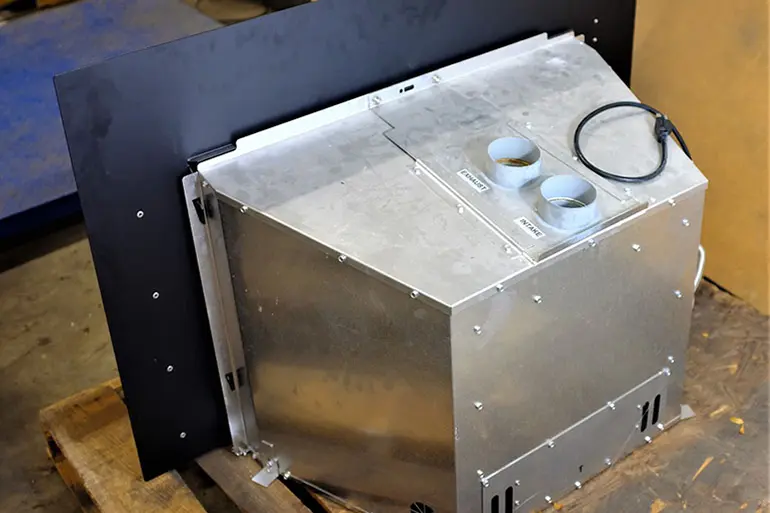5 Things You Need To Know Before Buying a Direct Vent Fireplace
With many gas fireplaces on the market, you might ask yourself, what type of fireplace is right for you? While we have already written an in-depth guide to understanding gas fireplaces article will explore five things you need to know before purchasing a direct vent gas fireplace.
-

- direct vent flue collars on an insert
How is a direct vent fireplace different from the rest?
A direct vent fireplace is best described as a vented gas fireplace with a sealed glass firebox. Because of its venting and setup, it is super efficient for heating. Coaxial pipes draw air from the outdoors for combustion instead of sucking air and heat out of the room you're sitting in.

